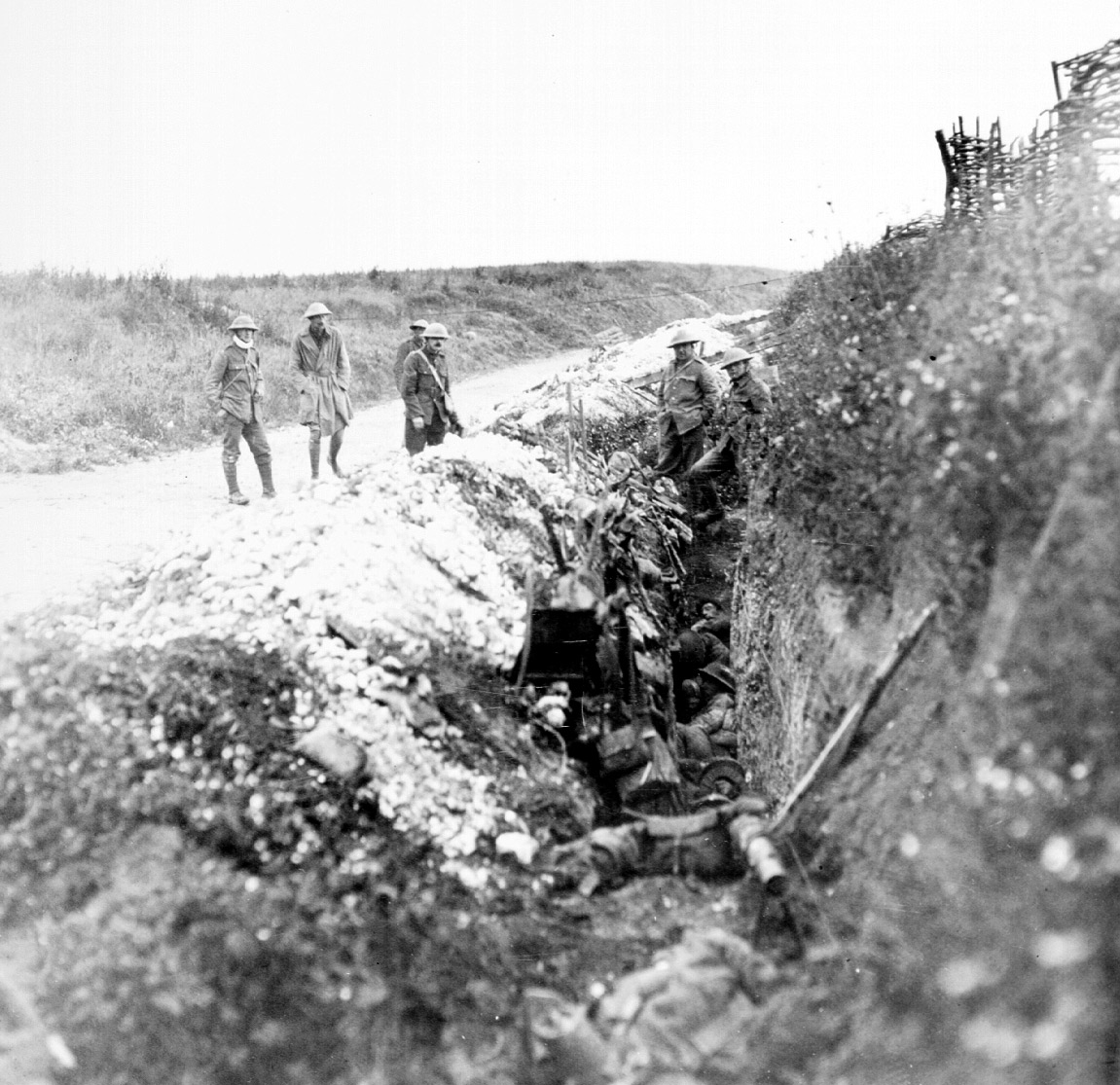Article / Project number: 16-102
Ottawa —For Newfoundlanders, July 1, 2016 marks not just Canada Day, but also the 100th anniversary of the ill-fated Battle of Beaumont-Hamel, part of the first day of the Battle of the Somme in France during the First World War.
 |
| Newfoundland soldiers in St. John's Road support trench on July 1, 1916. Courtesy of The Rooms Provincial Archives Division (NA 3105), St. John's, NL |
After two months, they were notified that they were to participate in the Somme Offensive in France.
The Battle of the Somme began on July 1, 1916 with British artillery hammering the German trenches for a week, in an attempt to weaken their defences. The artillery barrages concluded with a massive explosion beneath Hawthorne Ridge 10 minutes before the assault.
Unfortunately, this gave the German forces a heads-up that the real attack was about to start, and enough time to ready their defences. Furthermore, the German defences were not crippled by the artillery fire as British strategists had anticipated; their barbed wire was still mostly intact.
It was in these conditions that the 86th and 87th Brigades would be sent into battle, at 7:30 a.m.
Most of the initial wave of soldiers perished in No Man’s Land and on the uncut wire that lay before the German trenches. However, due to conflicting and confusing information, it was believed that some of the soldiers sent out had in fact managed to breach the German defences. Thus, Major-General Beauvoir De Lisle ordered the 88th Brigade to join the attack near Beaumont-Hamel at 9:15 a.m.
Like the Brigades that advanced before them, a lack of cover made them easy targets for German artillery. At 9:45 a.m., 30 minutes after the Newfoundlanders began their charge, British officials called off the attack. The rest of the day would be dedicated to slowly recovering what survivors there were.
Out of the 800 members of the 1st Newfoundland Regiment, only 68 were available at roll-call. The exact numbers of casualties in the Regiment varies from account to account; however, it is generally agreed upon that around 700 men were killed or wounded.
Despite the Regiment’s destruction, they rebuilt and continued to serve.
Over the course of the First World War, 6,200 Newfoundlanders would serve in the Regiment’s ranks; 1,300 of those would die, and 2,500 would be wounded or taken prisoner. The 1st Newfoundland Regiment would fight at Flanders, at Somme once again, and at Passchendaele.
The Regiment began to become recognized as a competent and deadly fighting force among the Commonwealth forces, culminating in the Regiment being rechristened as the Royal Newfoundland Regiment. It was the only Regiment during the First World War to receive the honor.
While the Battle of Beaumont-Hamel was seen as a failure, initial reception was not all doom and gloom. Officials at the time were quick to interpret and present the bloodshed as positively as they could.
Walter Edward Davidson, Newfoundland’s Governor, wrote, "These brave dead were among the best in our land. It is a national loss. Their places will never be filled, but their memory will never fade. God rest their heroic souls!”
Newfoundlanders touted the event as a stunning example of bravery and romantic self-sacrifice, a triumphant moment in the country’s history that showed to the world the capability of their nation.
This would change following the First World War, when Newfoundland found itself faced with immense economic and political turmoil. After the province joined with Canada in 1949, Beaumont-Hamel began to be seen more as a tragic and pointless event. Many believed a generation of talented young men that could have improved Newfoundland’s post-war standing and preserved its independence had been lost for no good reason.
Following the war, Newfoundland’s Great War Veterans Association pushed for the funding and creation of memorials. The National War Memorial at St. John’s was officially unveiled on July 1, 1924 and was followed by the Beaumont-Hamel Newfoundland Memorial, at the site of the battle itself, in 1925. Both were officially unveiled by Sir Douglas Haig, commander of the British Expeditionary Force from 1915 to the war’s end in 1918. Today, they stand as memorials to all Newfoundlanders who have fought and fallen in battle.
For the 100th anniversary in particular, several special events are being planned. In addition to the usual ceremonies at the memorials, soil at Beaumont-Hamel will be patriated, and brought back to Newfoundland and Labrador for ceremony.
Regardless of the changes in the way Beaumont-Hamel has been interpreted since that fateful day, July 1 will remain a day to remember and honor those that died.
No comments:
Post a Comment